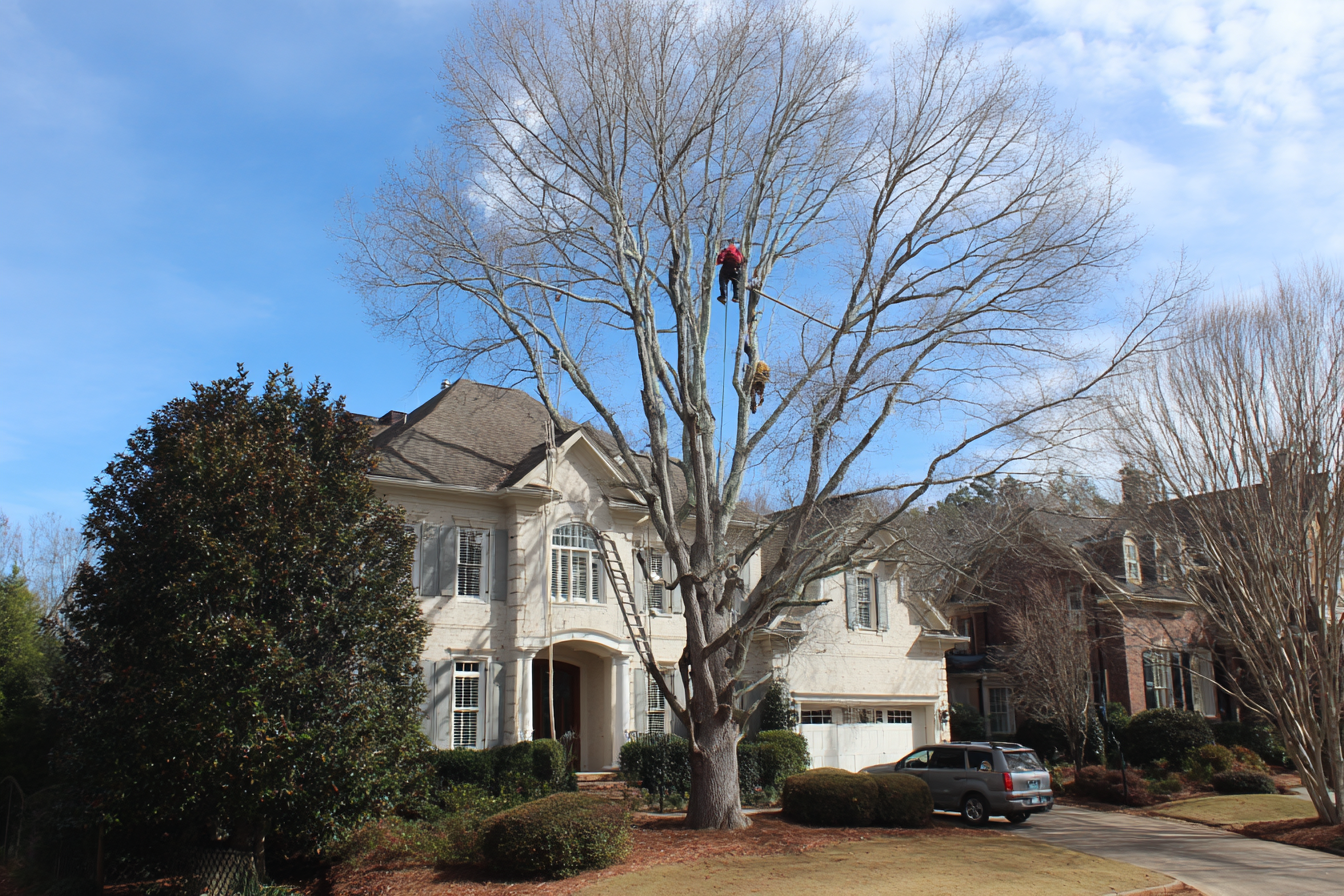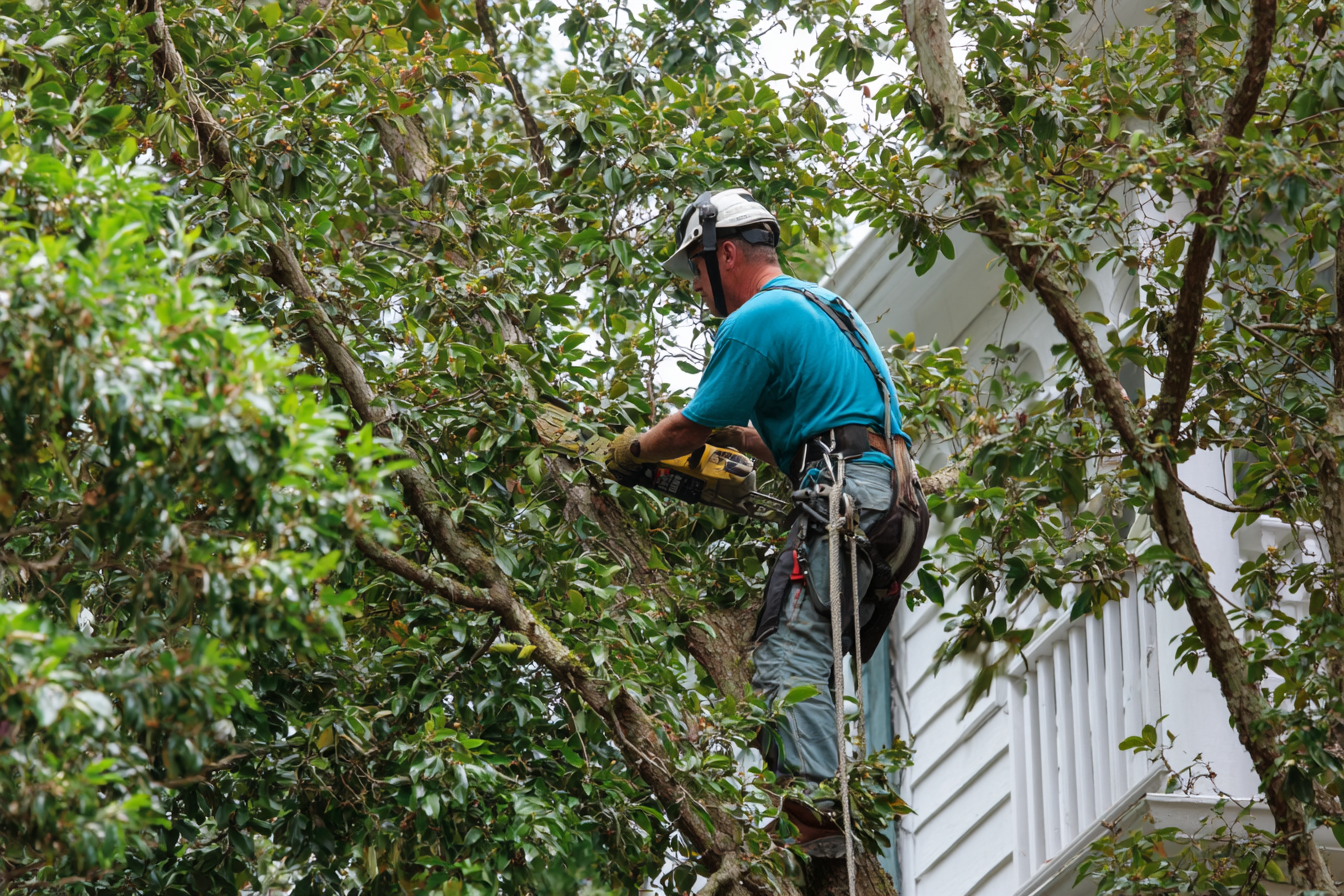
Georgia is famous for its beautiful, sprawling trees that provide shade, beauty, and character to our landscapes. From the majestic oaks of the Piedmont to the pines of the Coastal Plain, our trees are a cornerstone of our environment. However, these vital giants are not invincible. They are susceptible to a variety of diseases that can weaken their structure, diminish their beauty, and, in many cases, lead to their death.
As a homeowner, knowing what to look for can make all the difference. Early detection of a tree disease can mean the difference between saving a beloved tree and having to remove it entirely. It also protects your property from the significant risks associated with falling branches or a collapsing tree. This guide will walk you through some of the most common tree diseases in Georgia and teach you the key warning signs to look out for.
Why Are Georgia Trees So Vulnerable?
Georgia's warm, humid climate, while great for lush vegetation, also creates a perfect breeding ground for many fungal and bacterial diseases. The abundance of a single tree species in certain areas, such as the numerous oak trees, can also increase the spread of a specific disease, like oak wilt, from one tree to the next.
Environmental stressors, such as drought or excessive rain, can further weaken a tree's natural defenses, making it an easy target for pathogens. A tree's health is a delicate balance, and understanding these factors is the first step toward proactive care. A healthy, well-maintained tree is far more resistant to disease than one under stress.

The Most Common Tree Diseases in Georgia
Here are some of the most frequently encountered tree diseases in our state, along with their telltale symptoms.
1. Oak Wilt
Oak wilt is arguably one of the most destructive tree diseases in Georgia, especially for the highly susceptible red oak species. It's a vascular disease that disrupts a tree's ability to transport water and nutrients, leading to rapid decline.
- Symptoms to Spot: The most noticeable sign is sudden wilting and browning of leaves, which often starts at the top of the tree and moves downward. The leaves may turn a dull green, yellow, or brown, and often appear scorched.
- How it Spreads: The disease can spread through underground root grafts connecting nearby oak trees. It can also be transmitted by sap-feeding beetles that carry the fungal spores.
- Why it's a Big Deal: Once an oak tree is infected with oak wilt, it can die in a matter of weeks. The disease can then quickly jump to neighboring oaks, creating a domino effect that can wipe out an entire stand of trees.
2. Anthracnose
Anthracnose is a common fungal disease that affects a wide variety of deciduous trees, including sycamores, maples, dogwoods, and oaks. It thrives in cool, wet spring weather and often appears as the new leaves are unfurling.
- Symptoms to Spot: Look for irregular, brown or black spots on the leaves. These spots can merge together, causing large, blighted areas. The disease can also cause the leaves to crinkle, curl, or drop prematurely.
- Why it's a Big Deal: While a healthy, mature tree can often survive a severe case of anthracnose, repeated infections can weaken the tree over time, making it more vulnerable to other problems. It can also lead to twig and branch dieback, which affects the tree's overall appearance and health.
3. Powdery Mildew
If you’ve ever seen a tree or plant with a white, powdery coating on its leaves, you’ve likely encountered powdery mildew. This fungal disease is a common sight in Georgia's humid environment.
- Symptoms to Spot: The most obvious symptom is a white or grayish powdery substance that looks like a dusting of flour on the surface of the leaves, buds, and shoots.
- Why it's a Big Deal: Powdery mildew can reduce the tree's ability to photosynthesize, which can lead to stunted growth and premature leaf drop. While it is rarely fatal to a mature tree, it can significantly affect its vigor and appearance. Young trees are more susceptible to long-term damage.
4. Root Rot
Root rot is a dangerous soil-borne fungal disease that attacks a tree's roots, often going unnoticed until significant damage has occurred. It's a silent killer that can compromise the tree's stability and health.
- Symptoms to Spot: Symptoms are often visible in the canopy first. Look for yellowing or discolored leaves, stunted growth, and thinning foliage. In advanced stages, you may see conks, which are shelf-like fungal growths, at the base of the trunk or along the root flare.
- Why it's a Big Deal: Because it attacks the roots, root rot can cause a tree to lose its structural integrity. A tree that appears healthy above ground may have a completely rotted root system, making it a significant and unpredictable falling hazard.
5. Fire Blight
Fire blight is a bacterial disease that primarily affects fruit trees like apples and pears, but it can also be found on ornamental trees like crabapples. It gets its name from the scorched appearance it gives to the infected parts of the tree.
- Symptoms to Spot: Look for a sudden wilting and blackening of flowers and young shoots. The tips of the branches often curl downward in a distinctive “shepherd’s crook” shape. Cankers, which are sunken, blackened areas, may also appear on branches and twigs.
- How it Spreads: This disease is highly contagious and spreads rapidly in warm, moist weather. It can be carried by rain, wind, insects, and contaminated pruning tools.
Key Indicators That Something Is Wrong with Your Tree
Beyond the specific symptoms of individual diseases, here are some general warning signs that indicate your tree is in distress and needs attention.
- Discolored Leaves: Leaves that are yellowing, browning, or turning a different color earlier than usual can signal a nutrient deficiency or disease.
- Thinning Canopy: A sparse or thinning canopy indicates that the tree is not producing enough healthy leaves to sustain itself.
- Branch Dieback: Dead or dying branches at the ends of the tree's limbs are a common symptom of disease or stress. The lack of foliage is a clear sign of a problem.
- Fungal Growths: The presence of mushrooms, conks, or other fungal structures on the trunk, branches, or at the base of the tree is a strong indicator of internal decay or disease.
- Cankers or Lesions: Sunken, discolored areas on the bark or branches, known as cankers, are often a sign of a fungal or bacterial infection.
- Oozing or Staining: A sour or yeasty-smelling fluid oozing from the trunk, known as "slime flux," can be a sign of bacterial wetwood.

What to Do if You Spot a Problem
If you notice any of these symptoms, don't wait. A proactive approach is the best way to protect your trees and your property. While cleaning up fallen leaves and improving air circulation can help, a professional diagnosis is essential.
Attempting to treat a tree disease on your own without the proper knowledge or equipment can often do more harm than good. You could misdiagnose the problem, use an ineffective treatment, or, worse, spread the disease further.
Call in the Experts: Georgia Pro Tree Services
This is where a professional tree service like Georgia Pro Tree Services comes in. Our team of certified arborists are experts in tree pathology and can accurately diagnose the issue affecting your tree. We have the knowledge, tools, and experience to recommend the best course of action, whether it's a targeted treatment, strategic pruning, or, if necessary, safe and efficient removal.
We understand the unique challenges that Georgia trees face and are committed to helping you maintain a healthy, beautiful, and safe landscape. Don't let a silent disease turn your beautiful trees into a liability.
Call Georgia Pro Tree Services today for a professional inspection and consultation. Our experts are ready to help you protect the health and beauty of your trees!
FAQs About Tree Disease in Georgia
Q: What is the most common tree disease in Georgia?
A: The most common tree diseases in Georgia can vary depending on the specific location and tree species. However, Anthracnose and Powdery Mildew are very widespread fungal diseases that affect a large variety of trees. While not as common, Oak Wilt is one of the most destructive diseases, particularly for red oaks, and is a significant concern for homeowners with oak trees on their property.
Q: Can a diseased tree be saved?
A: Yes, many diseased trees can be saved, especially if the problem is caught early. The success of treatment depends on the type of disease, its severity, and the overall health of the tree. For fungal infections like powdery mildew, treatments and proper care can manage the disease. For more aggressive diseases like oak wilt, prevention is key, and if a tree is infected, swift removal is often the only way to prevent the disease from spreading to other trees. A professional arborist can accurately assess the situation and determine the best course of action.
Q: How do I know if a tree needs to be removed?
A: A tree may need to be removed if it poses a safety hazard to people or property. Signs that a tree is a hazard include: significant dead or dying branches, extensive trunk decay, large fungal growths on the trunk or roots, a visible lean, or a crack in the trunk. If a tree is severely infected with a fatal disease like oak wilt, removal may be necessary to protect surrounding trees. A professional arborist from Georgia Pro Tree Services can perform a risk assessment to determine if your tree is a hazard and should be removed.
Q: What is the difference between an arborist and a tree service company?
A: An arborist is a certified professional who specializes in the care of individual trees. They are trained in the science and art of arboriculture, including diagnosis of diseases, pruning, and health care. A tree service company, like Georgia Pro Tree Services, employs arborists and a skilled team to provide a full range of services, including tree trimming, removal, and emergency services. A reputable tree service company will have certified arborists on staff to ensure that all work is done correctly and safely.
Q: How can I prevent tree diseases?
A: The best way to prevent tree diseases is to maintain the overall health and vigor of your trees. This includes providing adequate water, especially during dry spells, and avoiding common mistakes like over-mulching or causing damage to the trunk or roots with lawn equipment. Regular pruning can improve air circulation and remove dead or diseased branches before an infection can spread. It's also wise to choose tree species that are resistant to common diseases in your area when planting new trees.

We're your local tree pros!
Georgia Pro Tree Services takes the highest quality of care when servicing your trees. Call us to find out how we can help you keep your yard in top shape.



